January - Broadcast Sowing
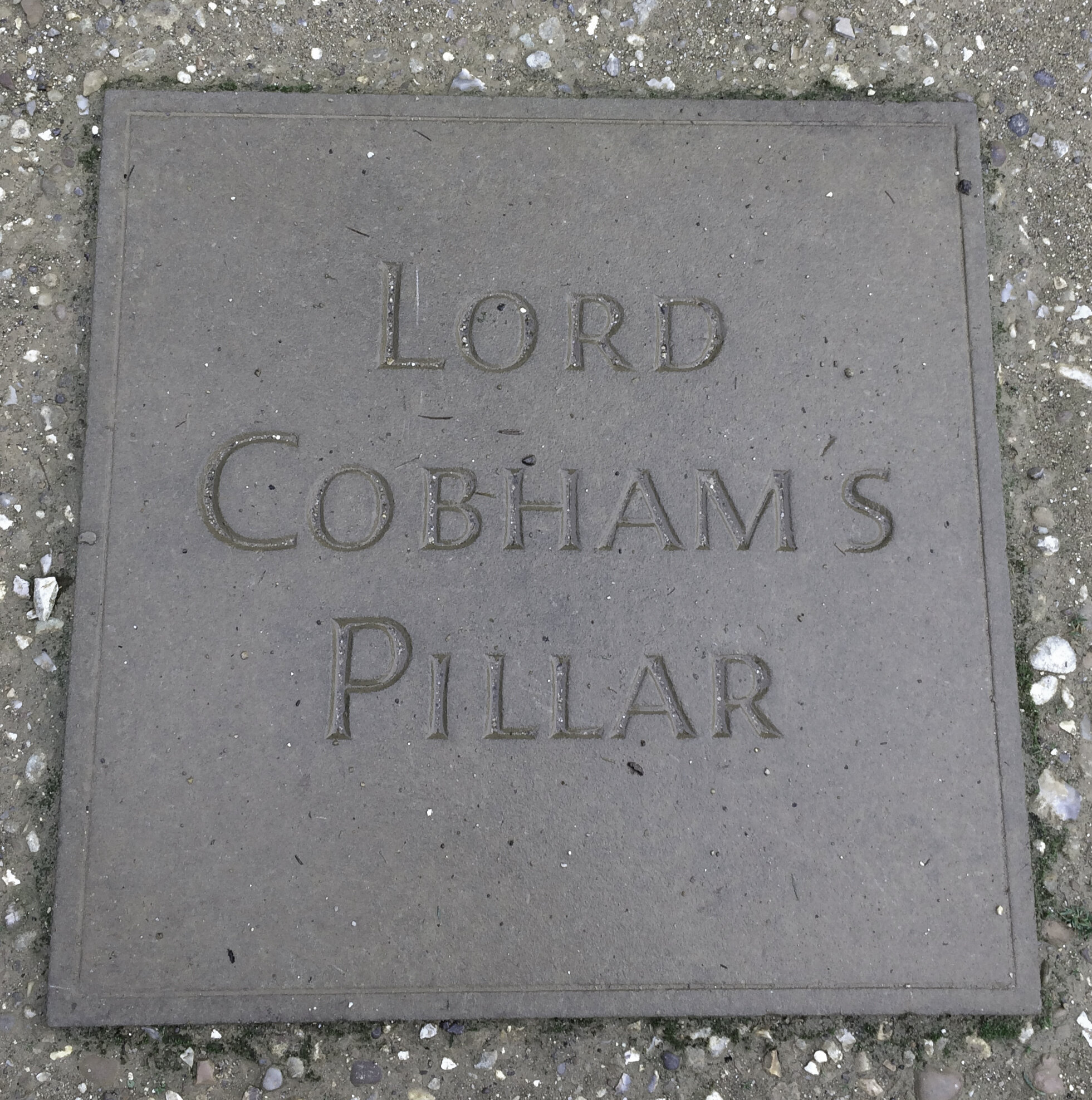
A grey square stone with the engraved words 'LORD COBHAM'S PILLAR' in capital letters, surrounded by a dirt and gravel ground.

A stone plaque with the inscription 'WINKING AT A VIOLENCE' engraved on it, mounted on a grey wall.
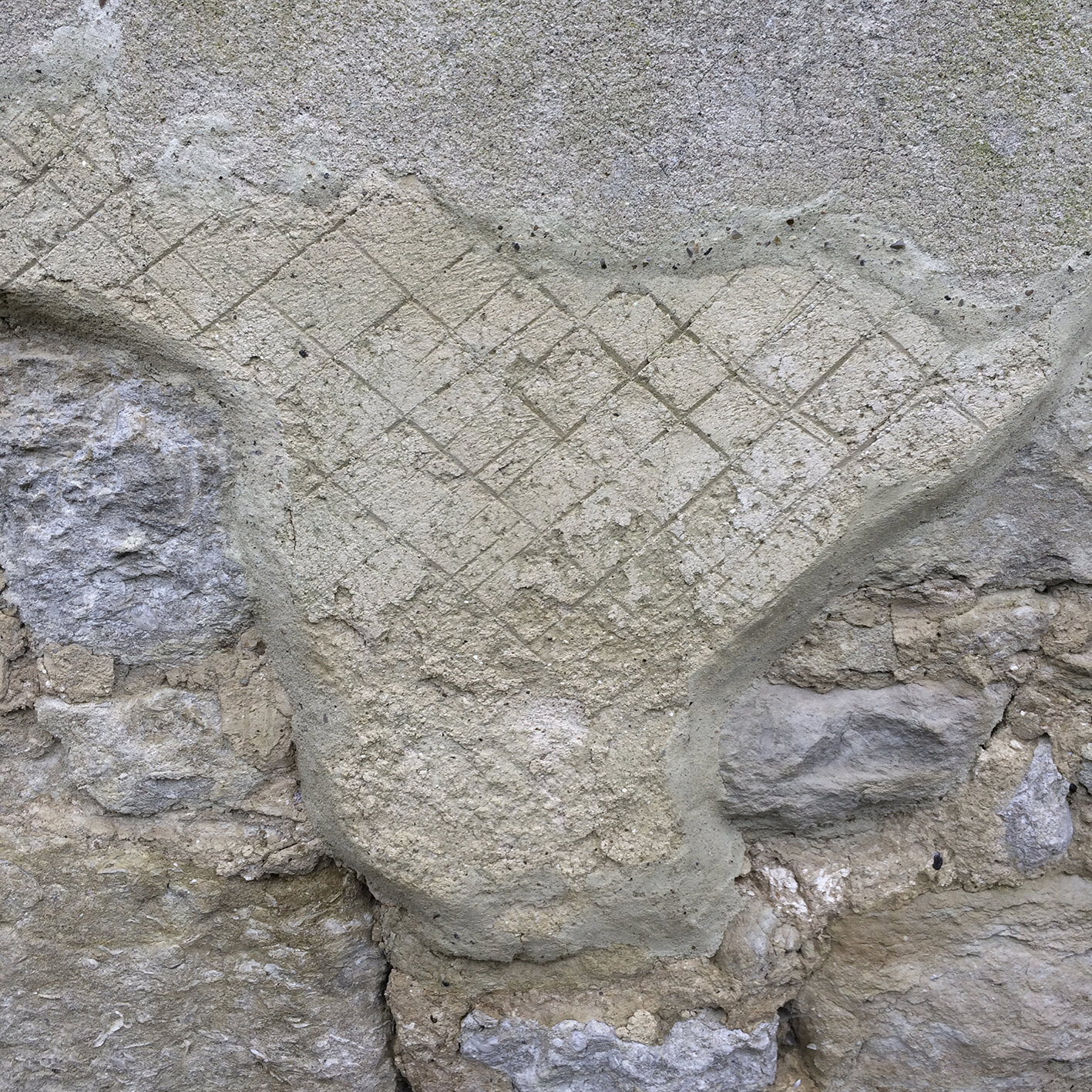
Close-up of a stone wall with an engraved heart on a rectangular stone.

A concrete or stone plaque embedded in the ground with the words 'Delayed Falling' inscribed in uppercase letters.

A white marble statue of a woman holding a theatrical mask with a fierce expression, surrounded by trees and an overcast sky.

Close-up of an ancient stone sculpture of a mythological figure with a muscular body and intricate hair, outdoors with dark tree background.

View of a large leafless tree from below with dark branches against a grey sky.
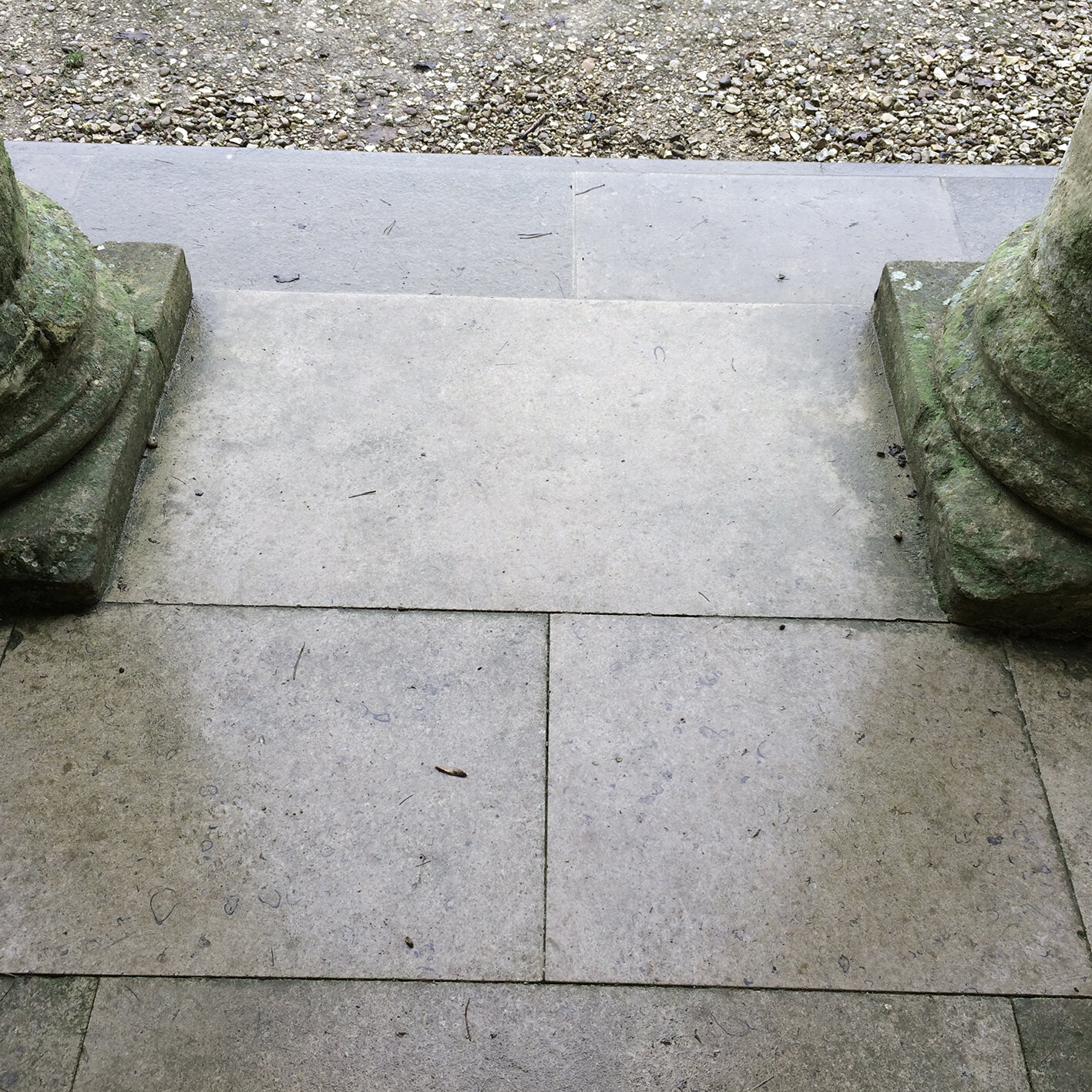
Close-up of stone steps with decorative stone pillars on either side, leading to a gravel surface outside.

A stone archway entrance to a farm or pasture, with a flock of sheep gathered in front. The sheep have black faces and white wool, and some are resting while others are standing or looking around.

A square stone plaque with the quote "Local means different things in different areas and at different times" engraved on it, placed on a gray pavement surface.

A lake scene with a boat near the shore, trees on the bank, and birds flying in the sky at sunset.

A concrete plaque embedded in the ground with the inscription 'Temple of British Worthies' engraved on it.

A black and white warning sign with a large exclamation mark and the text 'No climbing' attached to a stone wall.

A plaque with the words 'Aspiration Dates' engraved on it.

Entrance to a historical monument with large moss-covered stone columns and a statue inside a niche.
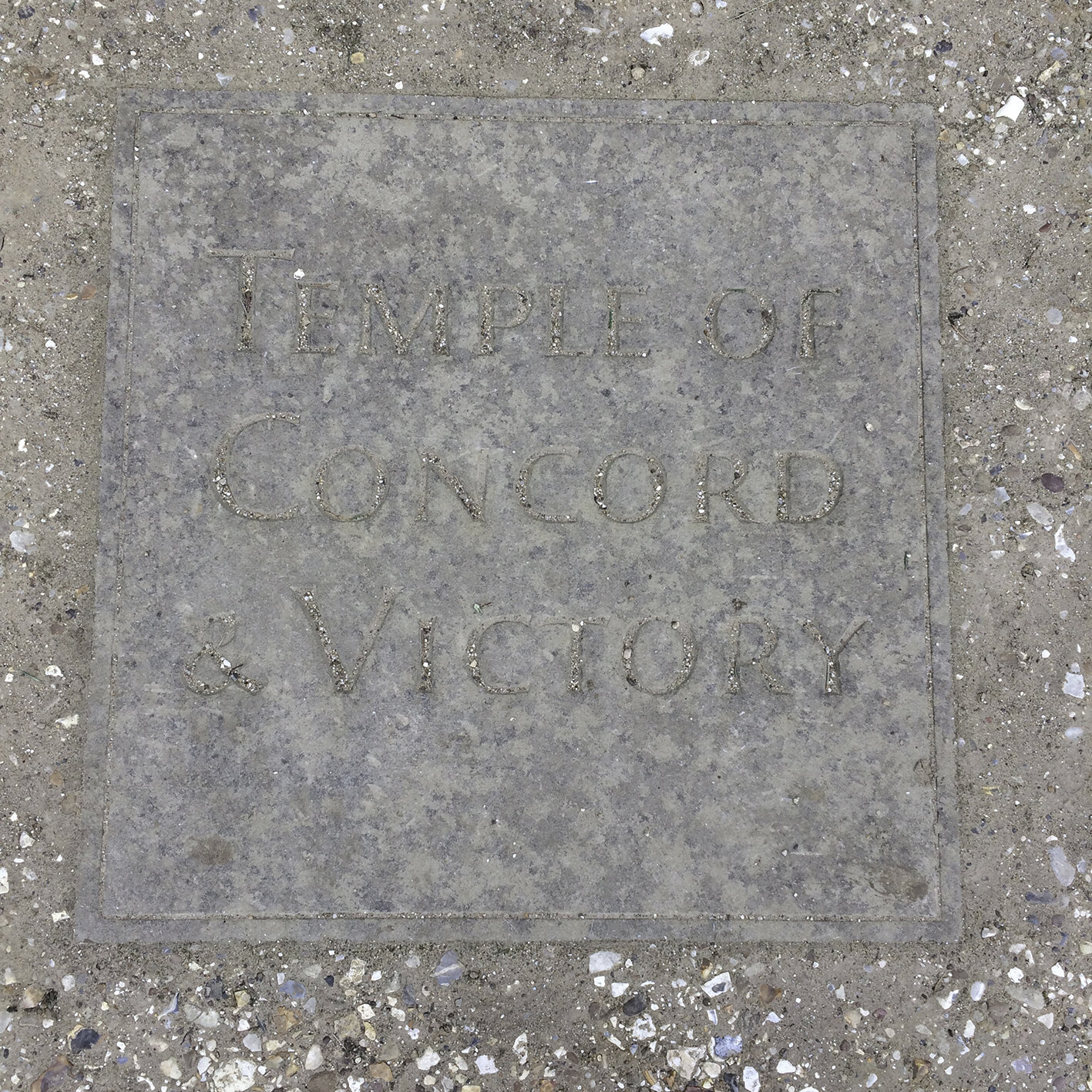
Inscribed stone marker reading "Temple of Concord & Victory" on pavement surrounded by dirt and small stones.
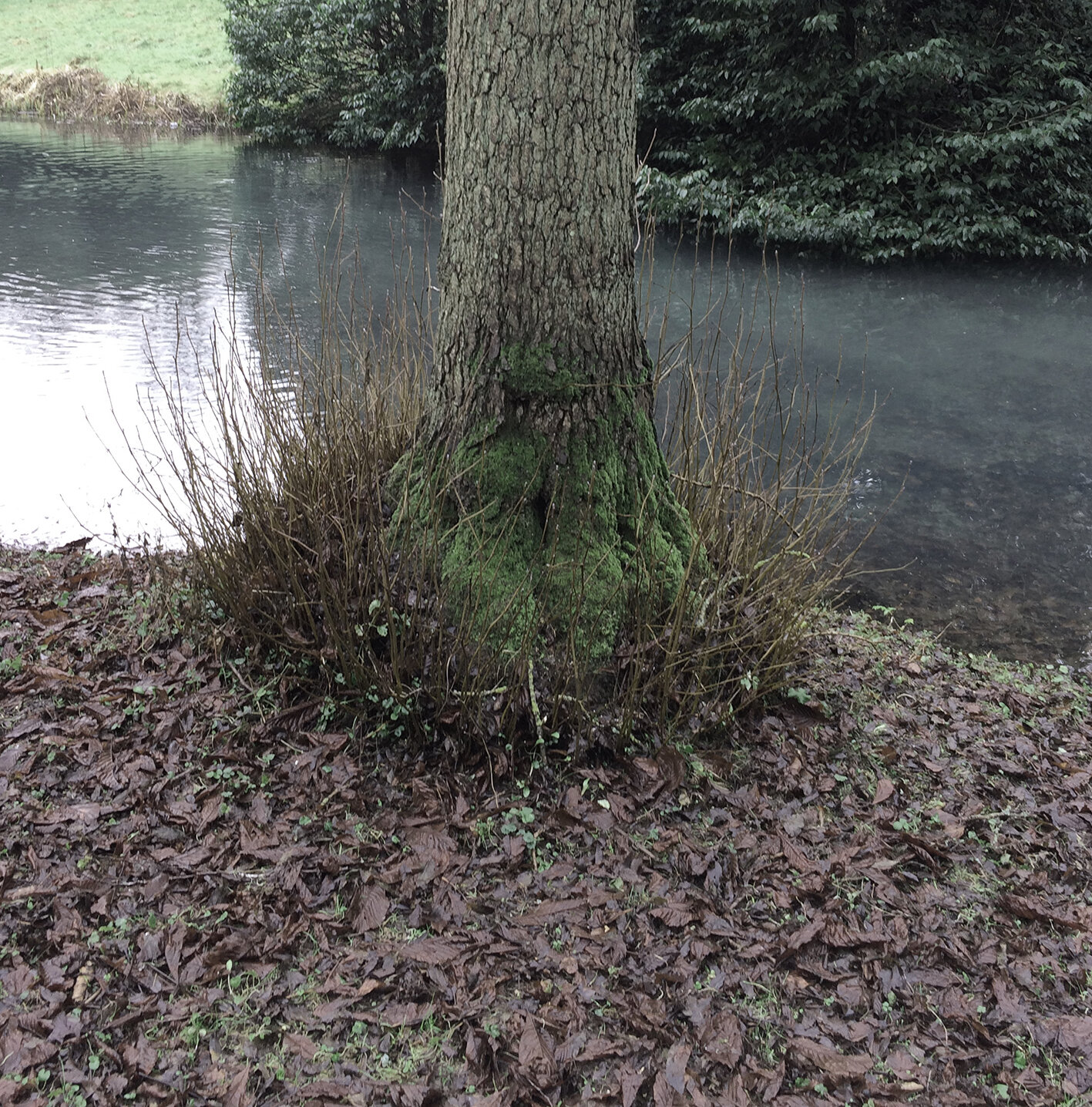
A tree with moss at its base, surrounded by leaf litter and dry twigs, next to a body of water with a grassy area in the background.

A stone or concrete surface with a square plaque embedded in it. The plaque has a textured background and bears the inscription: 'Between ones past and future identities'.

Stone sculpture of a woman with short hair, looking upward, mounted on a wall with decorative detailing below.
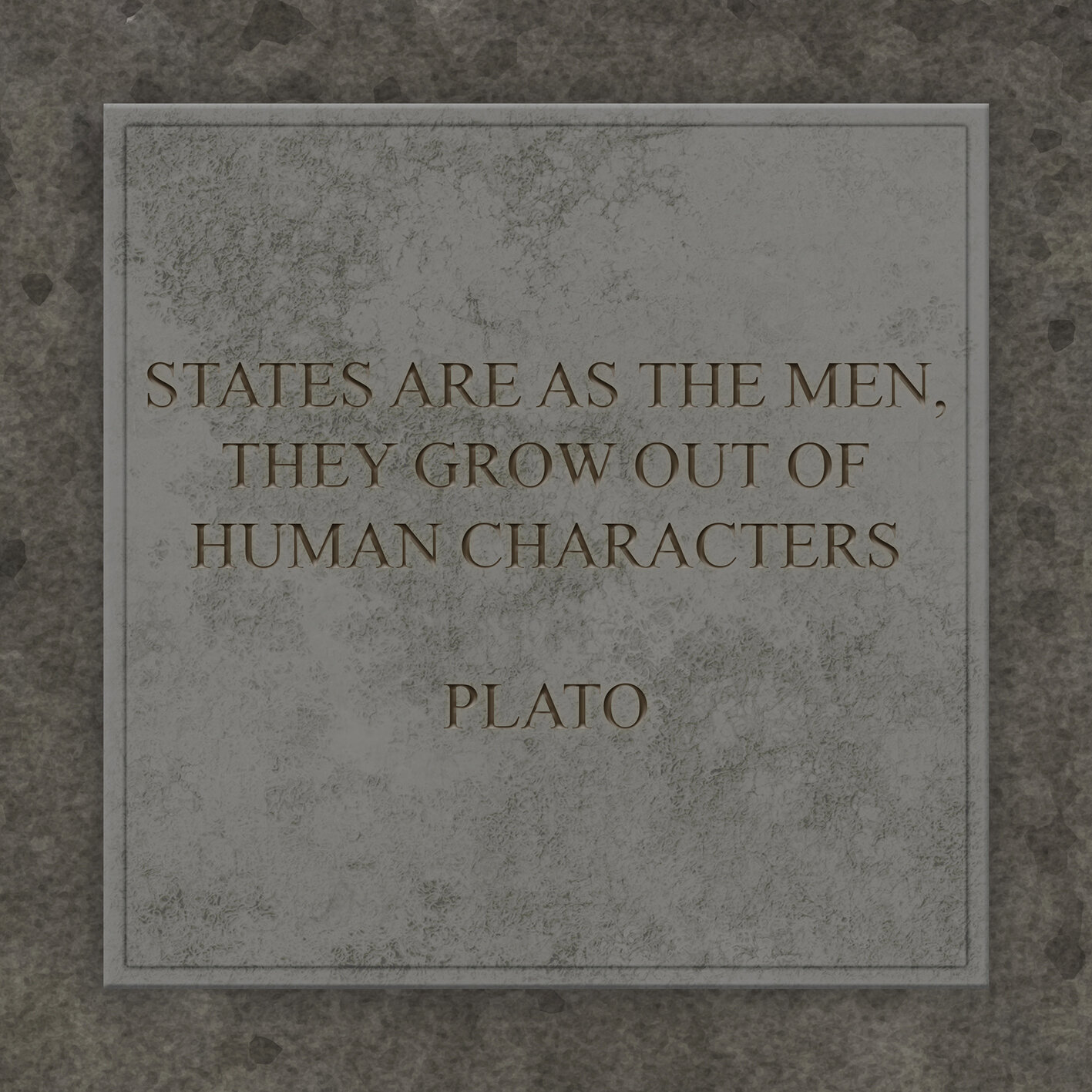
A quote by Plato carved into a stone plaque on a concrete surface that reads, "States are as the men, they grow out of human characters."

A foggy park or garden scene with a grassy path leading towards a classical pavilion surrounded by trees, some of which are leafless, and a curved pathway on the right side.

A stone sidewalk with the engraved text 'TRUST, ANCIENT, VIRTUE' visible.

Marble statue of a bearded man dressed in robes, holding a cup, positioned in a small alcove.
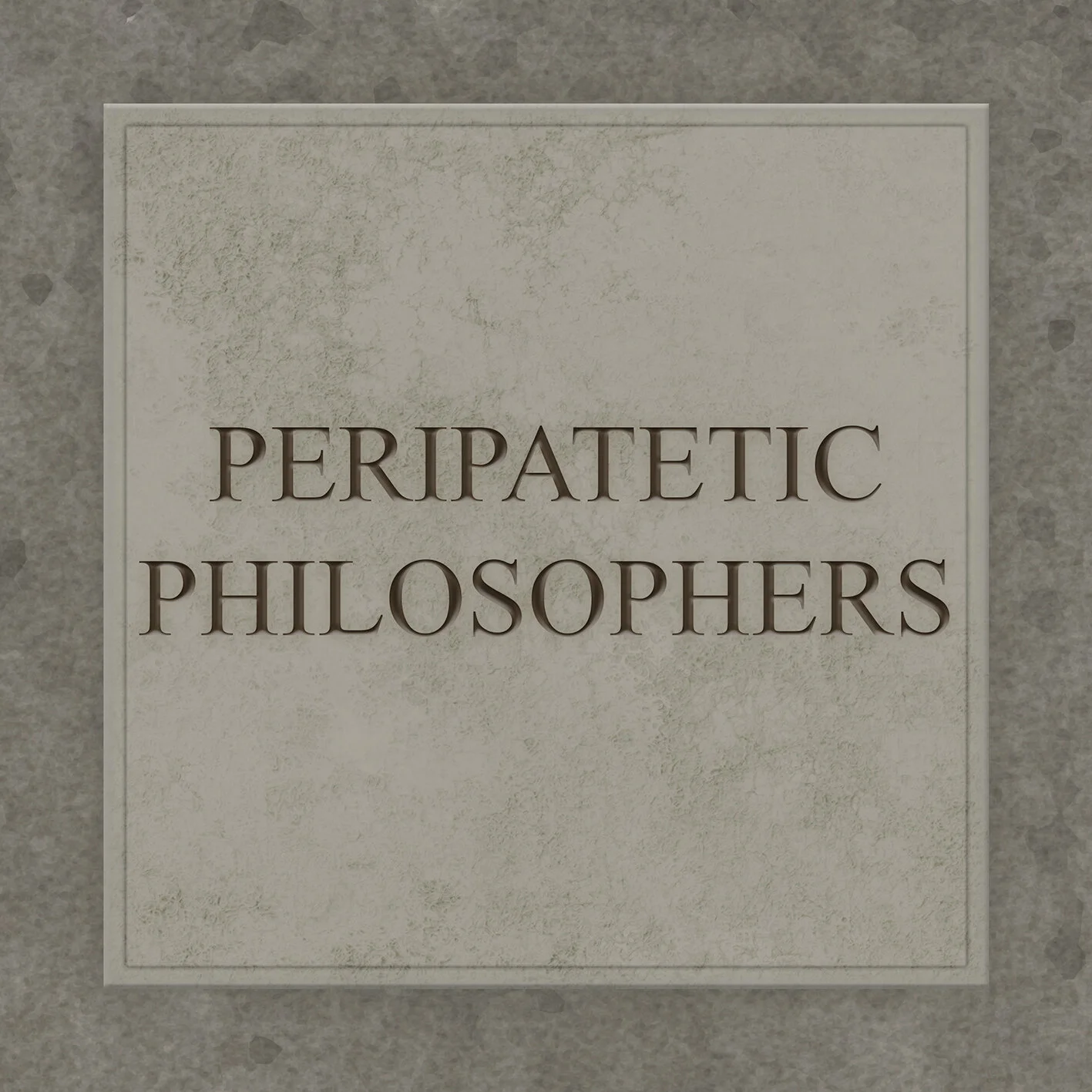
A stone plaque on the ground with the words "Peripatetic Philosophers" engraved in it.
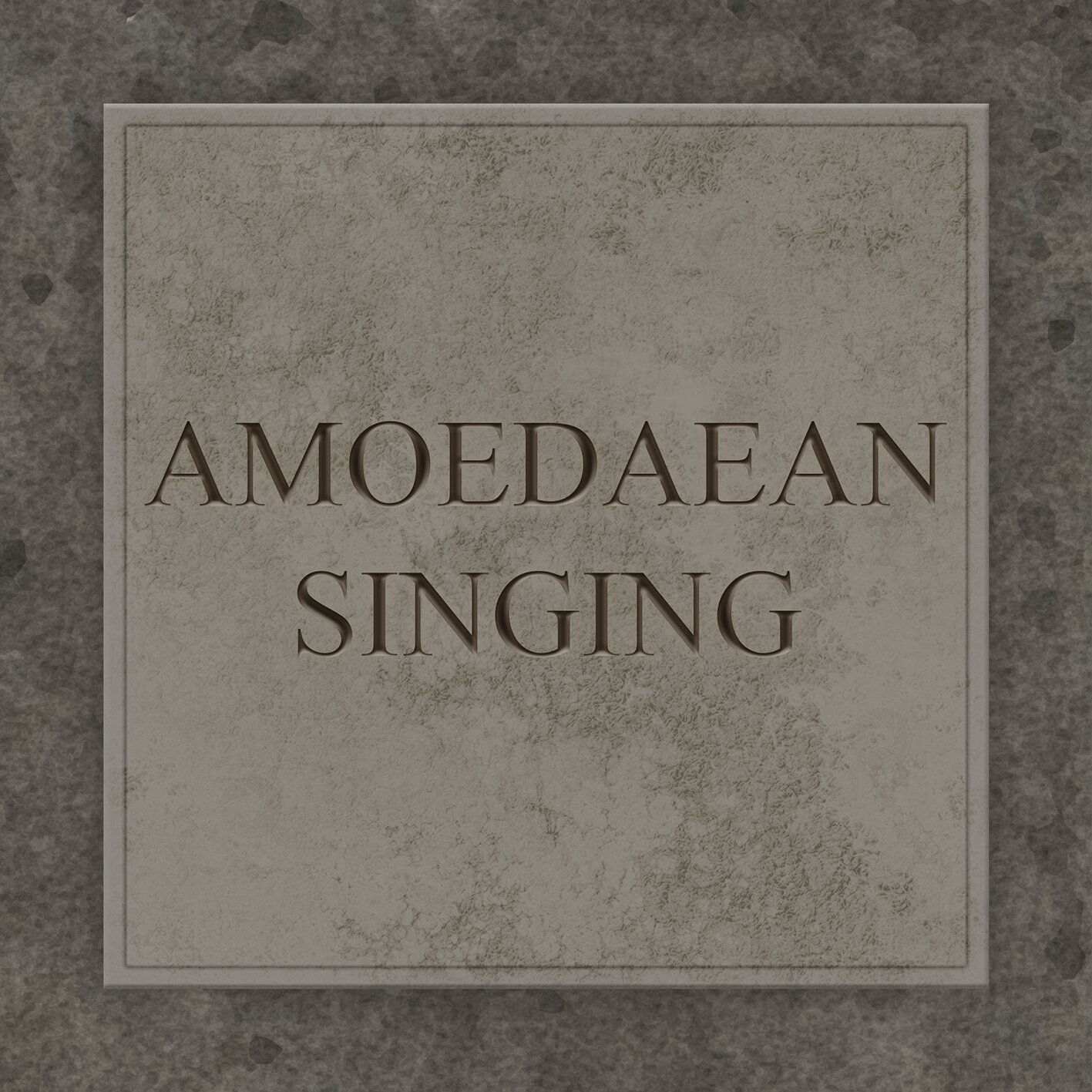
A stone plaque with engraved text reading 'AMOEDAEAN SINGING' surrounded by a thin border, set in a concrete or stone surface.

Stone bust of a man with wavy hair, dressed in a coat and shirt, set in a weathered stone wall.

Close-up of a stone sculpture's lower section showing feet and part of the draped clothing, with the engraved name 'SOCRATES' on the base.

Concrete sidewalk square with the words 'LAKE WALK' engraved.

A flooded wooded area with trees, bushes, and a small pond or waterlogged ground.

A muddy ground covered with standing water, reflecting the bare trees and branches surrounding it. There is a small wooden bench or table partially submerged in the water.
February- Drift

A gray stone plaque with the words "Flirting with Falling" engraved on it, placed on a concrete surface.
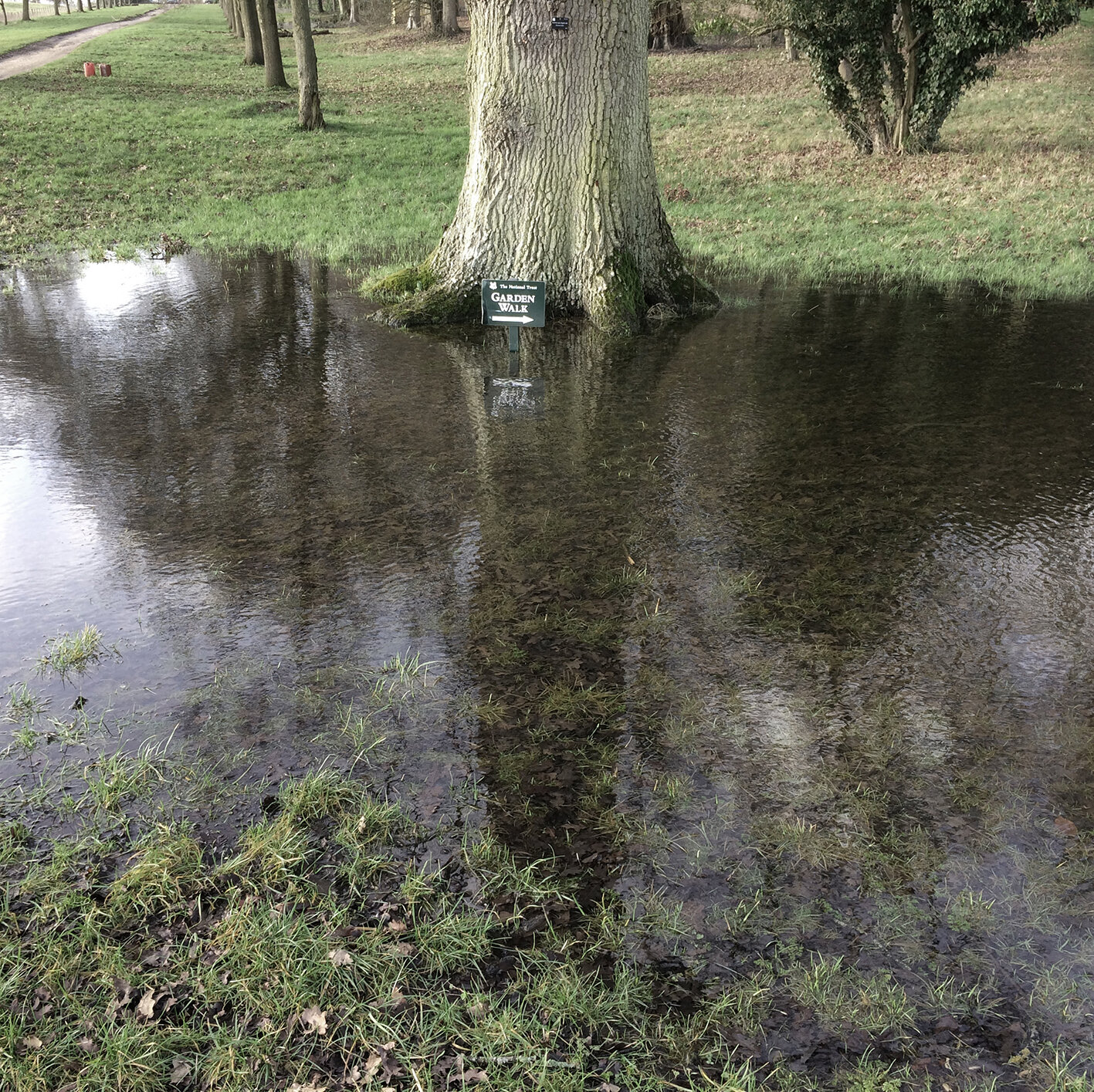
Flooded park area with a tree and a sign that reads 'Garden Walk' near the water.

A stone or concrete marker with the words "Sleeping Wood" engraved in the center.

Close-up of a weathered marble statue showing the lower part of two legs and feet, with some moss or algae, and the base with the inscription 'HOMERUS'.
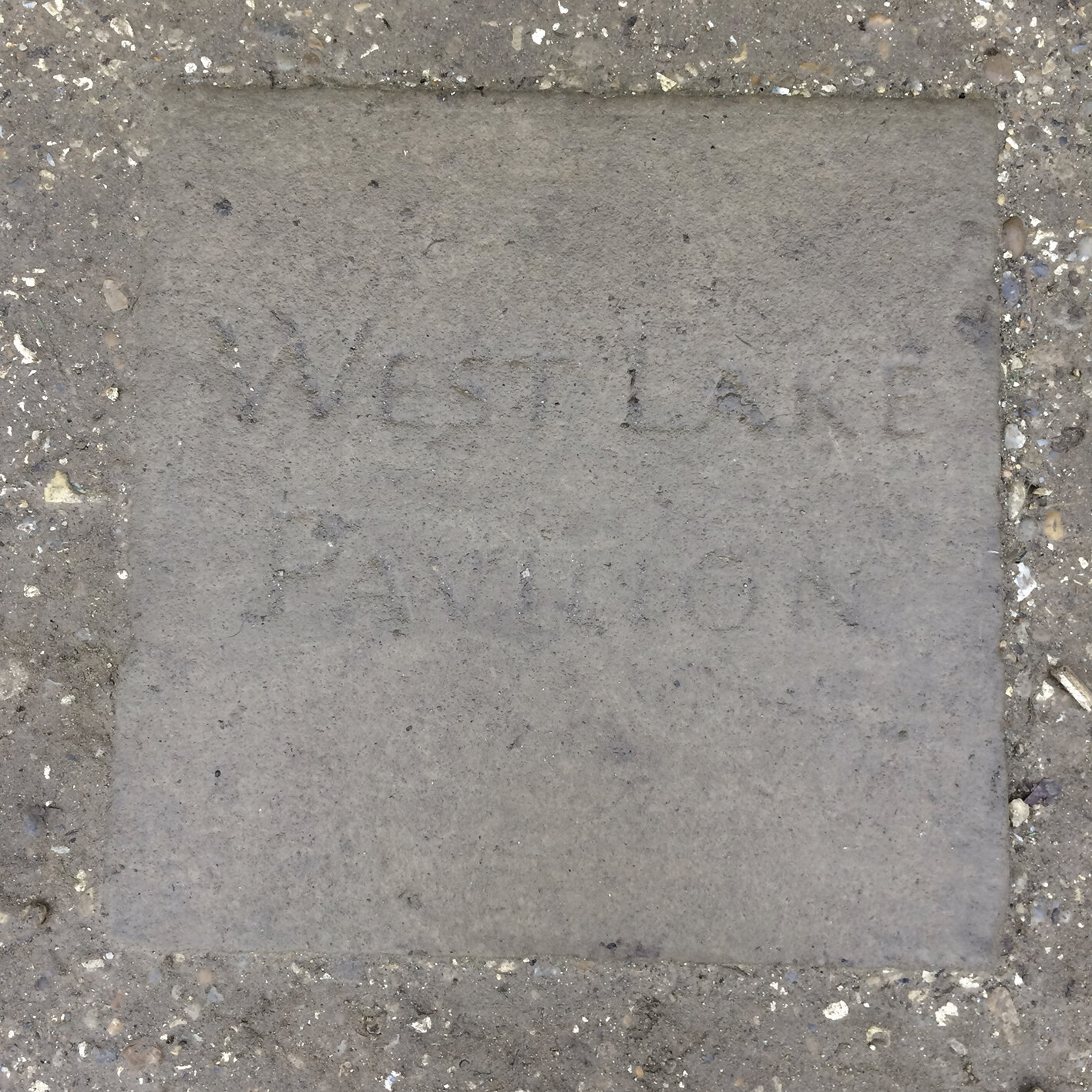
A concrete sidewalk square with an inscription that reads "RESERVE".
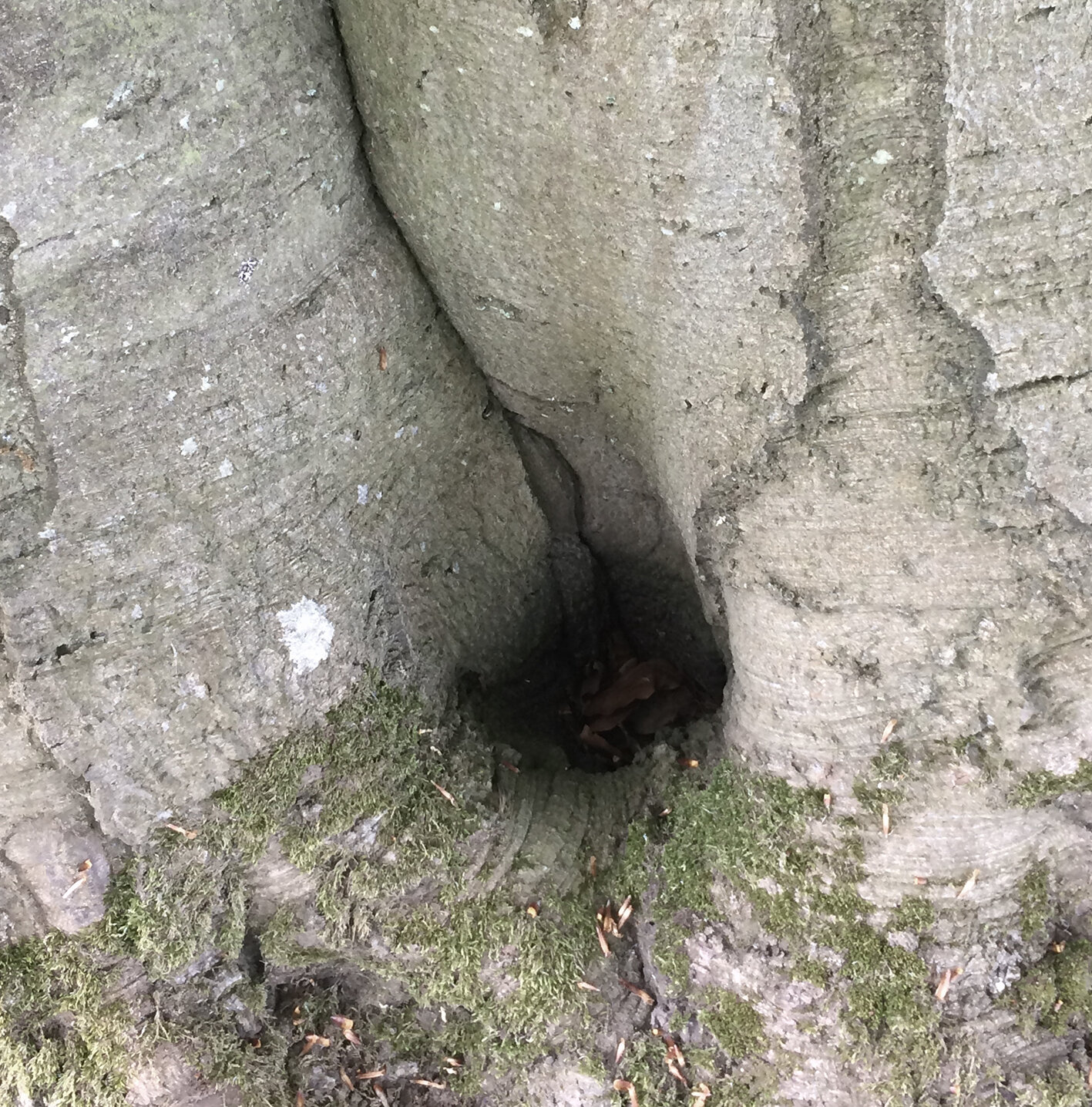
Close-up of a tree trunk with a hollow at the base filled with fallen leaves and moss growing around the opening.

A stone plaque with an engraved quote by Kierkegaard that says: 'It is accidental and insignificant things in life which are significant'

Close-up of a decorative stone architectural element with a circular pattern, featuring radiating petal-like shapes and a central rosette.
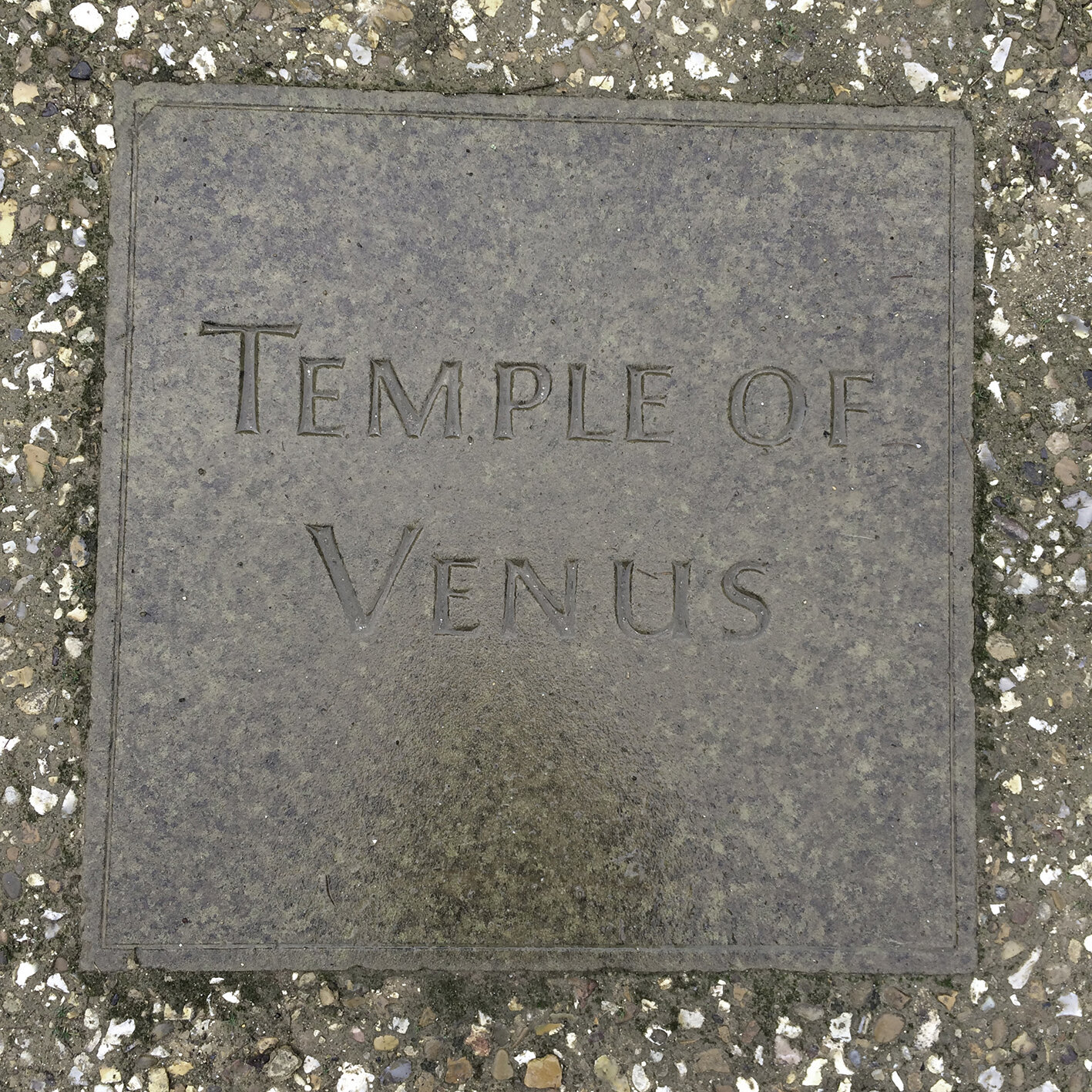
A square metal plaque embedded in the ground with the inscription 'Temple of Venus' etched into it.

Reflections of trees on a partially frozen river with fallen branches and a moss-covered log.

A frozen body of water with broken ice and patches of snow on its surface.

A concrete slab with the names 'Captain Grenvilles Column' engraved on it, surrounded by dirt and small rocks.
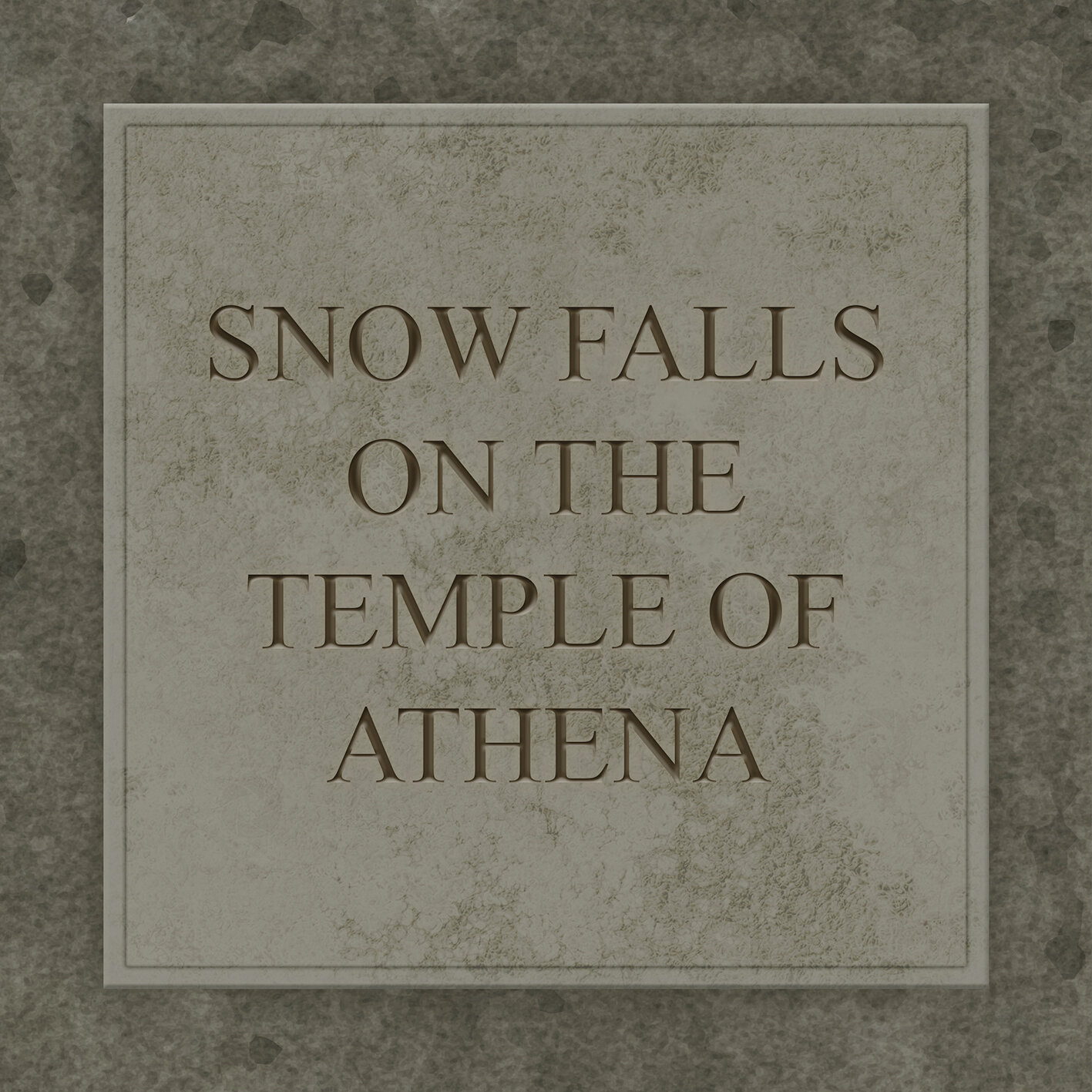
A stone engraved plaque that reads "Snow falls on the temple of Athena".

Close-up of a stone structure with decorative lion sculptures on top and round wreath-like carvings on the walls.

Close-up of a weathered stone sculpture of a man's head and shoulders with long, wavy hair, set against a stone wall.
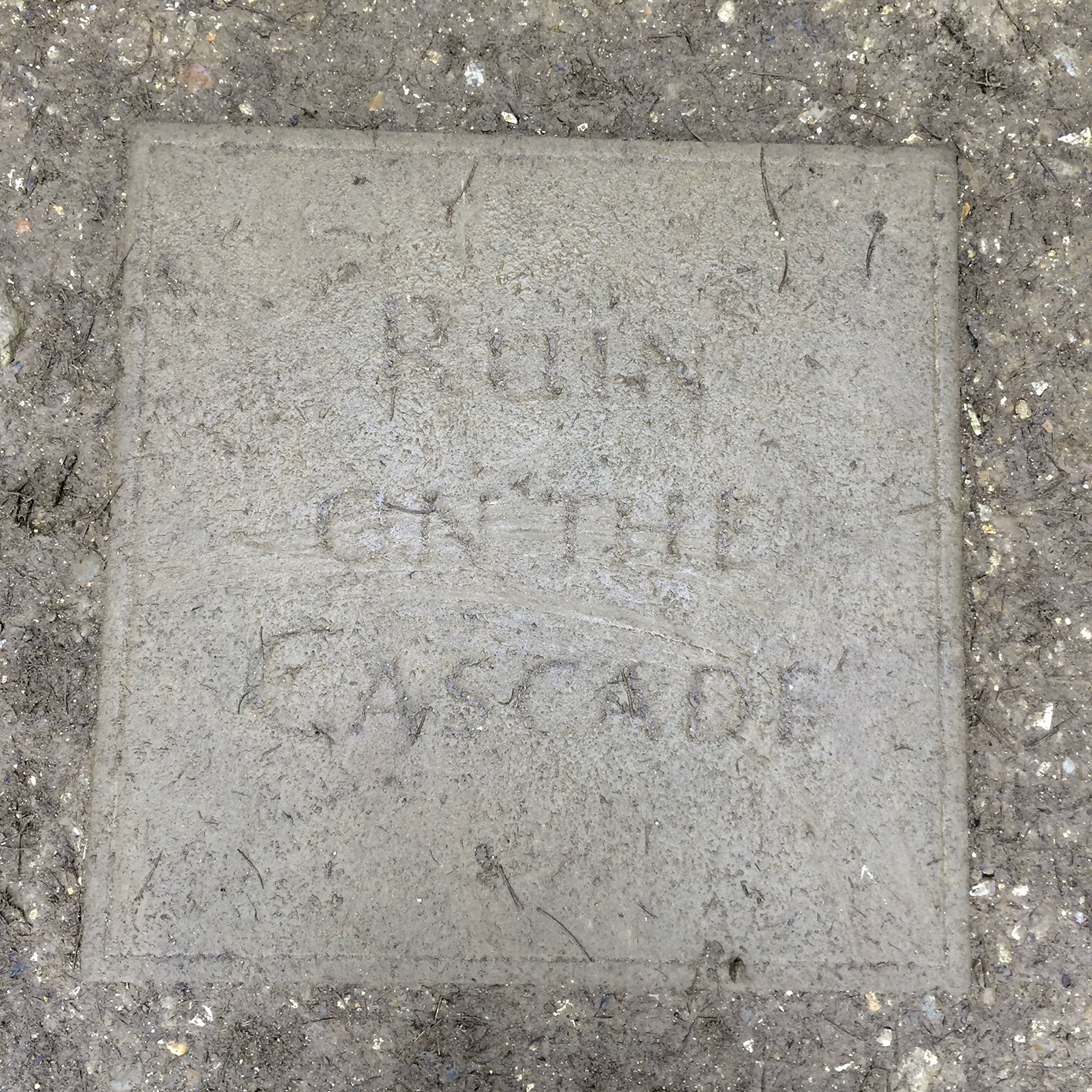
A concrete sidewalk square with engraved text that reads 'THIS SIDE UP'.

Fallen tree trunk lying on the ground in a forested area, surrounded by fallen leaves and green bushes.

A large, gnarled tree with twisted branches stands on a patch of dark soil in a park, with surrounding grass and other trees in the background.

A set of white classical-style bust sculptures on pedestals flanking a white door, framed by two large stone columns, with a stone frieze and architrave above.

Weathered stone memorial or plaque with carved decorative border, mounted on a stone wall.

A white marble statue of a woman holding a ball in her left hand, with an ornate building and cloudy sky in the background.
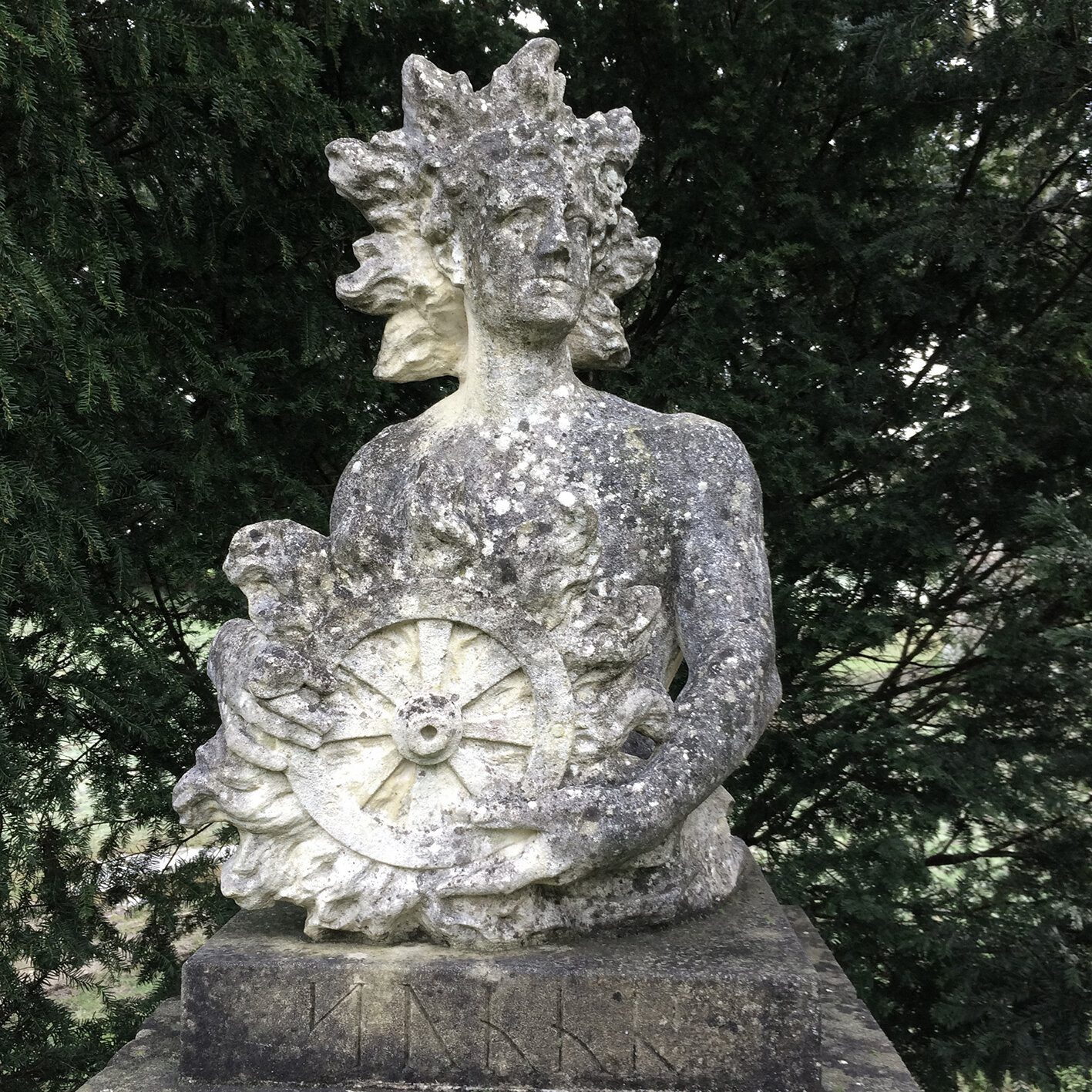
Stone statue of a woman with a headdress, holding a ship's wheel, surrounded by trees.

Sculpture of a soldier resting with hand on face, wearing a helmet and military uniform, surrounded by trees.

Dirt path through a tunnel of trees with bright light at the end.

Close-up of an ancient stone sculpture of a humanoid figure with crossed arms, covered in yellow lichen, with green trees in the background.

A stone plaque with the engraved text: 'The worst for being hidden'.

Close-up of a stone monument base with the inscription 'MORI' carved into it, surrounded by leafless trees and an overcast sky.

A classical style outdoor sculpture of a nude woman on a pedestal, seen through weathered stone columns with a park and trees in the background.

A large, ornate stone urn with decorative lions and snakes on the top. The urn features engraved text and is positioned on a stone pedestal outdoors, with trees and shrubbery in the background.

A square stone or concrete sign with an inscription that reads, 'A BALL BREAKING A WINDOW - IT WON'T WORK BACKWARDS STOPPARD'
March - Root Bound
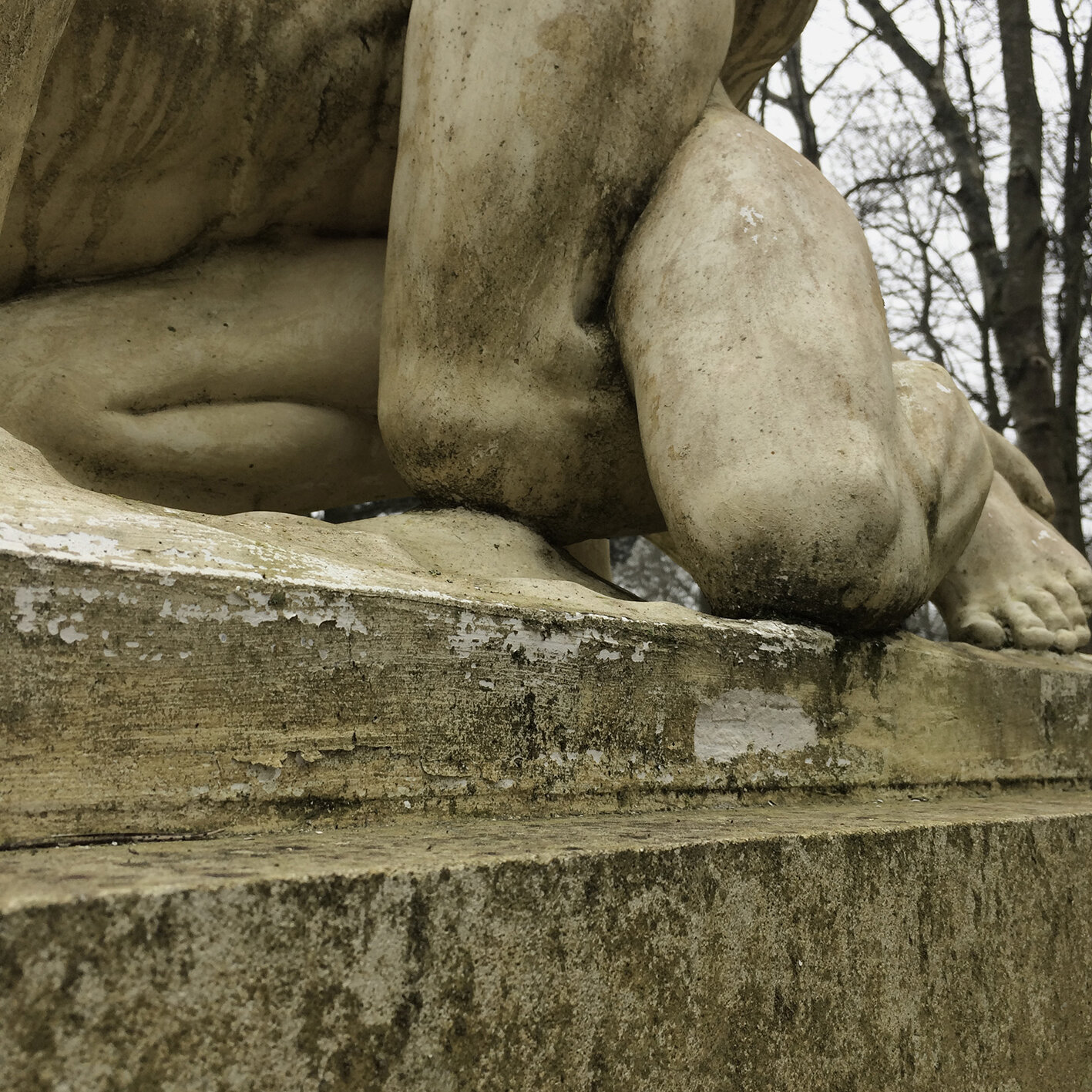
Close-up of a weathered stone sculpture showing part of a figure's legs and feet, with trees in the background.

A square concrete plaque embedded in the ground with the word 'HERITAGE' engraved in it.

A stone plaque with engraved text that reads '9TH PAROXYSMS IN LESS THAN TWO DAYS'.

A stone staircase leading up to a classical style monument or building with large columns and a statue inside a niche, with an inscription 'PRINCE VIRTUTI' above the archway.

Stone bust of a woman with curly hair on the corner of a building.

A stone sculpture of a woman's bust mounted on a decorative pedestal against a stone wall.
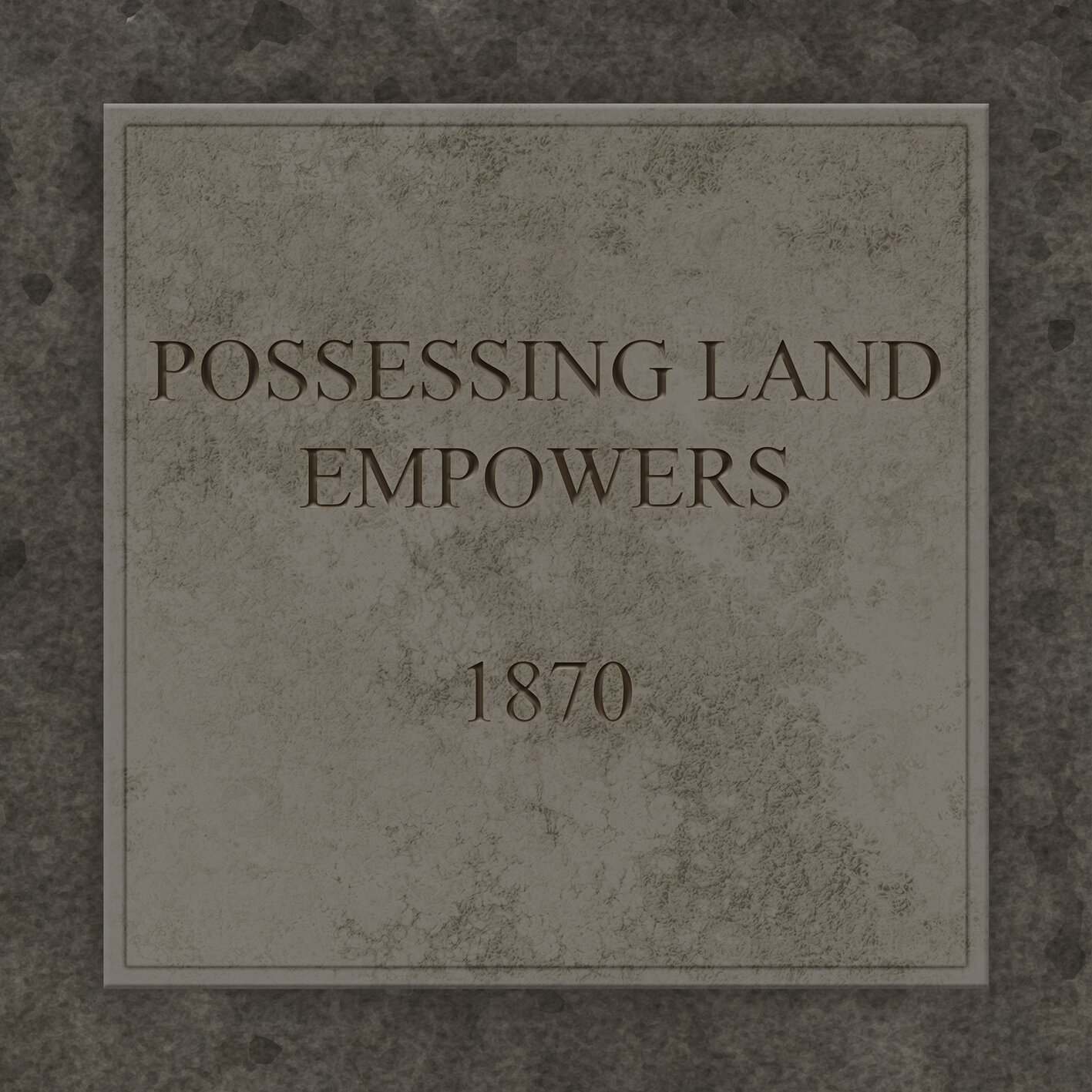
A stone plaque with the words 'Possessing Land Empowers 1870' engraved on it.

A close-up of a weathered stone sculpture, showing detailed carvings and textures with a background of leafless trees.

Stone steps leading up to a tall blue door framed by four large columns at a classical building.

A memorial plaque with the inscription "In Currencies of Silence" engraved on it, placed on a stone surface.

A tall stone monument with a statue on top, set against a partly cloudy sky.

A white pavilion with a rounded roof and archway, flanked by decorative statues, located in a park with leafless trees and a cloudy sky.

A large, leafless tree with twisting branches and textured bark viewed from below against a blue sky with some clouds.

A mosaic wall with small stones and pebbles arranged in patterns, featuring an octopus and the word 'ICA' spelled out with black stones.

A decorative mosaic made of small stones and pebbles, including the words "the new" and "hope," on a textured stone surface beside rough stone bricks.

Concrete sidewalk square with the inscription 'Pebble Above' engraved in the center of the surface.

Close-up view of ancient mosaic artwork with intricate patterns, small stones, and some visible worn-out writings.

Close-up of a stone and pebble mosaic embedded in a concrete surface, featuring different colored stones arranged in decorative patterns.

Close-up of a weathered stone sculpture of a person's head with curly hair and a decorative element near the ear.

A stone plaque with the inscription 'Embracing the Albatross' engraved in it, placed on a concrete surface.

A concrete plaque embedded in the ground with the words "Palladian Bridge" engraved on it.

Animal tracks on dirt ground with small patches of grass.

Close-up of intricate mosaic featuring swirling patterns, geometric shapes, and a symmetrical design with earth-tone colored stones.

Stone monument with carved lion heads, set in a park with leafless trees and a cloudy sky.

A concrete sidewalk plaque with the inscription 'Lord Cobhams Walk,' surrounded by dirt and small stones.

A pond with surrounding trees, some covered with ivy, and a spherical object hanging from a tree branch near the water.

Ancient engraved stone plaque with French inscription about the origin of the town of Grenville.

Close-up of a weathered stone sculpture, possibly of a mythical creature or figure, showing detailed textures and black dirt or moss.

An old abandoned shoe placed on a wooden platform on the ground in front of a grassy area with a dirt path winding toward a historic stone church surrounded by leafless trees under a cloudy sky.

A leafless tree leaning against a wooden fence in a grassy field with a river and wooded hills in the background under a blue sky.
April - Meanderings









